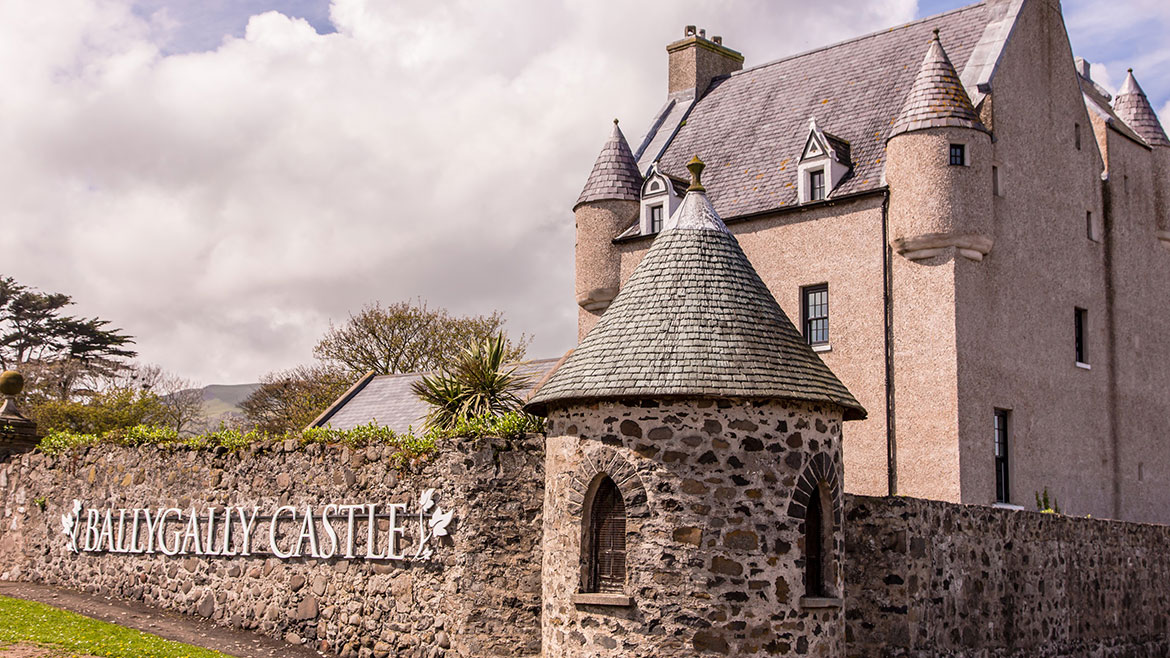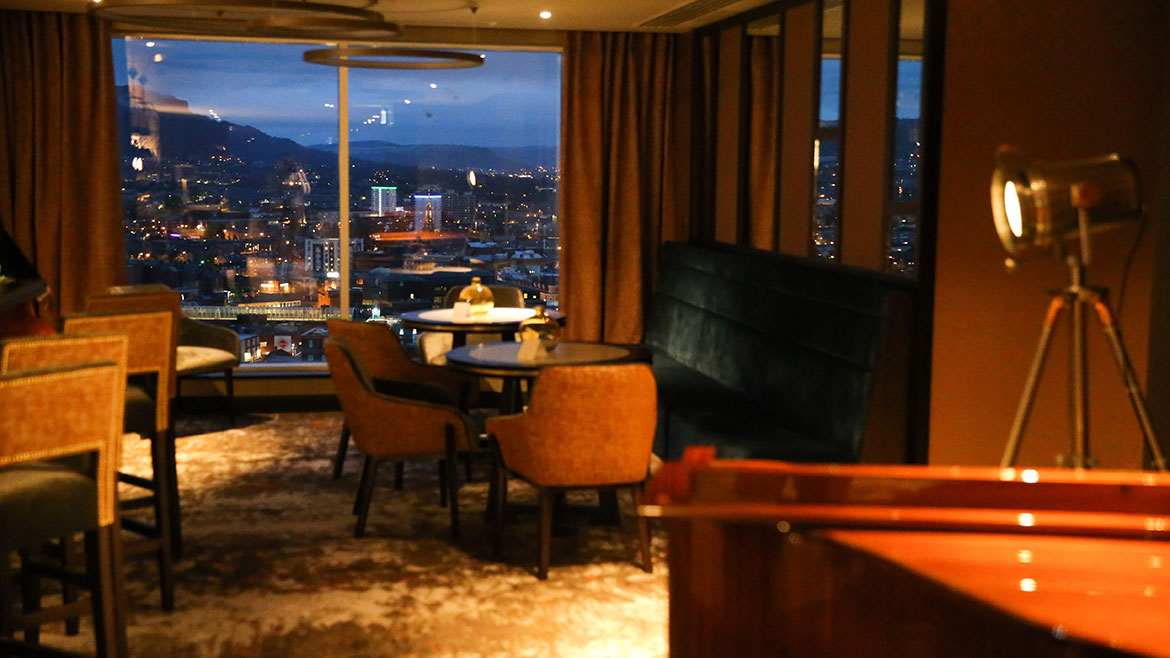Northern Ireland: welcome to the land of giants
Chris Carter visits Ballygally Castle and the Grand Central Belfast Hotel in search of larger-than-life stories and legends


Northern Ireland is a land of giants, ghosts and dragons. On the north Antrim coast, you will find the Giant’s Causeway, a rocky outcrop of 40,000 hexagonal basalt columns reaching into the Irish Sea. Joan, our guide from the National Trust, explained its ancient origins. It was, she said, created by the Irish giant Finn McCool.
He built it to reach his giant neighbour, Benandonner, with whom he had a score to settle and who lived over the way in Scotland, darkly visible in the distance. McCool was big (judging by the fossilised shoe he left on the beach). But Benandonner was bigger. And when McCool clapped eyes on his rival, he decided the tête-à-tête could wait and hurried home. But Benandonner followed.
So, McCool pretended to be out of the house and he climbed into his baby’s crib to lie low. What a big baby he was! And how big must the baby’s father be, wondered Benandonner. He didn’t wait to find out. Benandonner, too, fled home over the causeway, tearing it up behind him.
MoneyWeek
Subscribe to MoneyWeek today and get your first six magazine issues absolutely FREE

Sign up to Money Morning
Don't miss the latest investment and personal finances news, market analysis, plus money-saving tips with our free twice-daily newsletter
Don't miss the latest investment and personal finances news, market analysis, plus money-saving tips with our free twice-daily newsletter

Ballygally Castle was built in 1625
My partner and I walked along the cliffs bathed in brilliant September sunshine until it was time to head back in less-hurried fashion via stops at Carrick-a-Rede – another National Trust property with a rope bridge not suitable for giants – and the Dark Hedges, a spooky double row of beech trees (as seen on fantasy TV series Games of Thrones). Following the coast road we arrived back at Ballygally Castle.
What remains of the castle has the appearance of a central keep dotted with turrets – less Walt Disney than Guillermo del Toro. It was built in 1625 right on the seashore, almost in defiance of the furious waves crashing on the beach in front, by James Shaw, who came to Northern Ireland from Scotland. (Like McCool, he didn’t get on with the neighbours.)
The story goes, he locked his wife, Lady Isabella Shaw, in a turret after she bore him a daughter instead of a male heir. One way or another, she fell out of the window and, to this day, her ghost haunts the castle. She even has her own room in the hotel – the Ghost Room.
Spooky goings-on
On the night we arrived, after dark I crept up the stone steps to see if she was in. Hers is a cold, pokey room – the rooms for the living are much bigger and more comfortable, but then the needs of the dead are few.
Peering in, I saw a small bed and a chair in the corner facing me. Everything was covered in an eerie green glow – an alarming revelation until I realised the light was coming from the emergency exit sign above the doorway.
Health and safety extends even to ghost rooms, it would seem. I left Lady Isabella in peace and went back down to find warmer spirits in the bar, located in the newer part of the hotel.

The building blends in with Belfast
A giant’s eye view of Belfast
Belfast lies pretty much equidistant from Ballygally Castle to the north and the Game of Thrones Studio Tour to the southwest – both are located around 25 miles away. Much of the hit TV series was filmed in Northern Ireland and the studio is absolutely worth a visit for the phenomenal costumes and sets used in the filming, explanations of the production process and gigantic models of dragon skulls. (See? I promised you dragons.)
In the city itself, the beautifully designed Titanic Belfast museum is a must-see for the interactive exhibits explaining how the doomed ocean liner was painstakingly built on the site of the museum – you can see where the ship first slid into the water – as well as for the telling of the very personal stories of those who perished on that fateful maiden voyage across the Atlantic, in April 1912.

Stunning views from the bar
The city is a hodgepodge of former industrial might, with the colossal Harland & Wolff cranes framing the skyline, classical-style buildings (as in Belfast City Hall), modern office blocks and thrumming pubs, bars and trendy restaurants.
We took it all in from the 21st-floor window of our room at the five-star Grand Central Hotel Belfast, which, like Ballygally Castle, comes under the Hastings Hotels umbrella.
It is a modern steel-blue edifice, rising into the sky, yet somehow it manages to blend in with its surroundings. The hotel offers fine-dining options and stellar views from the Observatory bar lounge on the top floor – perfect for a little postprandial Irish whiskey. For those who are not giants, you can still feel like one.
Chris was a guest of Hastings Hotels. Sea Dips & Hot Sips offer at Ballygally Castle from £230 for two sharing – call +44 (0) 28 2858 1066. Double rooms at the Grand Central Hotel Belfast cost from £300 a night, with breakfast – call +44 (0) 28 9023 1066. Special thanks to Tourism Northern Ireland.
Get the latest financial news, insights and expert analysis from our award-winning MoneyWeek team, to help you understand what really matters when it comes to your finances.

-
 The shape of yields to come
The shape of yields to comeCentral banks are likely to buy up short-term bonds to keep debt costs down for governments
-
 The sad decline of investment clubs – and what comes next
The sad decline of investment clubs – and what comes nextOpinion Financial regulation and rising costs are killing off investment clubs that once used to be an enjoyable hobby, says David Prosser